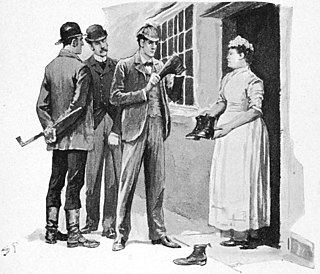
Detective fiction is a subgenre of crime fiction and mystery fiction in which an investigator or a detective—whether professional, amateur or retired—investigates a crime, often murder. The detective genre began around the same time as speculative fiction and other genre fiction in the mid-nineteenth century and has remained extremely popular, particularly in novels. Some of the most famous heroes of detective fiction include C. Auguste Dupin, Sherlock Holmes, and Hercule Poirot. Juvenile stories featuring The Hardy Boys, Nancy Drew, and The Boxcar Children have also remained in print for several decades.

Crime fiction, detective story, murder mystery, mystery novel, and police novel are terms used to describe narratives that centre on criminal acts and especially on the investigation, either by an amateur or a professional detective, of a crime, often a murder. It is usually distinguished from mainstream fiction and other genres such as historical fiction or science fiction, but the boundaries are indistinct. Crime fiction has multiple subgenres, including detective fiction, courtroom drama, hard-boiled fiction, and legal thrillers. Most crime drama focuses on crime investigation and does not feature the courtroom. Suspense and mystery are key elements that are nearly ubiquitous to the genre.
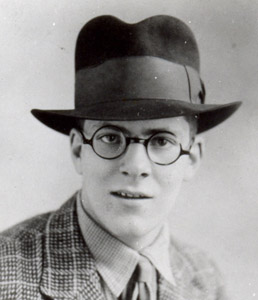
Ruthven Campbell Todd was a Scottish poet, artist and novelist, best known as an editor of the works of William Blake, and expert on his printing techniques. During the 1940s he also wrote detective fiction under the pseudonym R. T. Campbell and children's fiction during the 1950s.
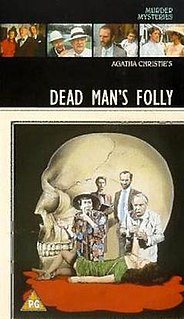
Dead Man's Folly is a 1986 British-American made-for-television mystery film featuring Agatha Christie's Belgian detective Hercule Poirot. It is based on Christie's 1956 novel Dead Man's Folly. The film was directed by Clive Donner and starred Peter Ustinov as Poirot.
Anthony Ruthven Gethryn is a character depicted in novels by Philip MacDonald and their cinematic counterparts.
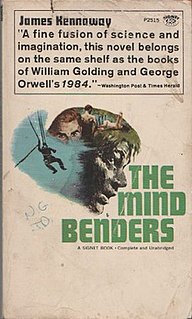
The Mind Benders is a 1963 novel by the British writer James Kennaway.
Inspector Joseph French is a fictional British police detective created by Irish author Freeman Wills Crofts. French was a prominent detective from the Golden Age of Detective Fiction, appearing in twenty nine novels and a number of short stories between 1924 and 1957. The character was introduced in the 1924 novel Inspector French's Greatest Case, where he investigates a deadly diamond robbery in Hatton Garden. The series relied largely on puzzle mysteries.

Silence is a 1972 novel by the British writer James Kennaway. His last novel, it was published posthumously.

The Bells of Shoreditch is a novel by the British writer James Kennaway. It set in the morally corrupting world of merchant banking in the City of London.

Spotted Hemlock is a 1958 mystery detective novel by the British writer Gladys Mitchell. It is the thirty first in the long-running series of books featuring Mitchell's best known creation, the psychoanalyst and amateur detective Mrs Bradley. It has been considered one of Mitchell's best novels along with other works such as The Saltmarsh Murders, Death at the Opera and The Rising of the Moon.
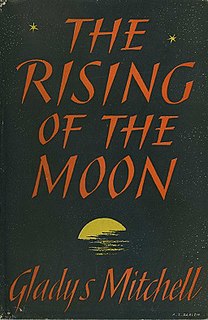
The Rising of the Moon is a 1945 mystery detective novel by the British writer Gladys Mitchell. It is the eighteenth in her long-running series featuring the psychoanalyst and amateur detective Mrs Bradley. It has been described as one of the best of Mitchell's novels.

Laurels are Poison is a 1942 mystery detective novel by the British writer Gladys Mitchell. It is the fourteenth in her long-running series featuring the psychoanalyst and amateur detective Mrs Bradley. It was Mitchell's own favourite among her novels and has been considered her best by other critics. It introduced the character of Laura Menzies who became recurring assistant of Mrs Bradley in subsequent novels.
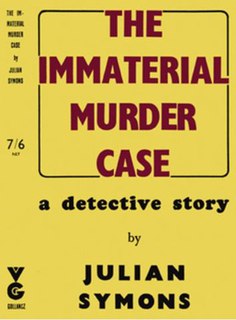
The Immaterial Murder Case is a 1945 mystery detective novel by British writer Julian Symons. His debut novel, it was the first in a trilogy featuring the Scotland Yard detective Chief Inspector Bland. The story gently makes fun of the "Great Detective" archetype popular during the Golden Age of Detective Fiction Symons wrote the book in 1939 but didn't submit it for publication for several years during the Second World War.
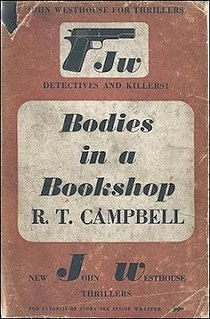
Bodies in a Bookshop is a 1946 mystery detective novel by the British author Ruthven Todd, written under the pen name of R.T. Campbell. It was one of several novels featuring the botanist and amateur detective Professor John Stubbs.
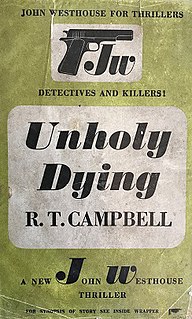
Unholy Dying is a 1945 mystery detective novel by the British author Ruthven Todd, written under the pen name of R.T. Campbell. It was the first in a series of novels featuring the botanist and amateur detective Professor John Stubbs. It has been republished in 1985 and 2019 by Dover Publications.

Death for Madame is a 1946 mystery detective novel by the British author Ruthven Todd, written under the pen name of R.T. Campbell. It was one of several novels featuring the botanist and amateur detective Professor John Stubbs. It takes the form of a closed circle of suspects investigation. It has been republished in 2018 by Dover Publications.

Swing Low, Swing Death is a 1946 mystery detective novel by the British author Ruthven Todd, written under the pen name of R.T. Campbell. It was the last of seven novels featuring the botanist and amateur detective Professor John Stubbs. Todd planned to continue the series, with five more titles announced, but the bankruptcy of his publisher brought the series to a halt. The following year he emigrated to the United States. It was republished in 2018 by Dover Publications, along with three others Stubbs adventures.

The Mystery of Number 47 is a 1912 comedy mystery thriller novel by the British writer J. Storer Clouston. Living in a quiet suburb of London and writing detective novels under an assumed name, Irwin Molyneux is suddenly drawn into a real-life case when he is sought by Scotland Yard for the murder of his wife due to a series of misunderstandings. It was originally published in London by Mills & Boon under the title His First Offence.

Beastmark the Spy is a 1941 spy thriller novel by the British writer J. Storer Clouston. His final published novel, it was one of several notable thrillers he wrote along with The Spy in Black and The Man from the Clouds. It originally appeared as a serial in Blackwood's Magazine.

















